10 Authentic Types of Insulation Material
Fiber-based materials (fiberglass, rock/slag wool, cellulose, and natural fibers), sleek foils, and other types of insulation material are included. The choice of insulation material depends on the specific requirements and preferences for a given application.
Bulky insulation materials, such as fiberglass, rock and slag wool, cellulose, and natural fibers, which are types of insulation materials, are effective in reducing conductive heat flow and, to a lesser extent, convective heat flow within the walls or cavities of a building. These materials create a barrier that inhibits the transfer of heat through direct contact and the movement of air.
On the other hand, rigid foam boards, which are types of insulation material, are designed to trap air or another gas within their structure. This trapped air acts as an insulating layer, impeding the flow of heat. The cellular structure of these boards allows them to provide high thermal resistance, making them efficient in reducing heat transfer.
In specific applications where radiant heat poses a challenge, highly reflective foils, which are types of insulation material, are utilized in radiant barriers and reflective insulation systems. These foils reflect radiant heat away from the living spaces, making them particularly beneficial in regions with warmer climates. By reflecting the heat rather than absorbing it, these materials help to maintain cooler indoor temperatures.
1. Fiberglass
Fiberglass is an insulation material composed of extremely fine glass fibers and is widely used in various forms of insulation. It can be found in blanket form, known as batts and rolls, as well as loose-fill insulation. Furthermore, fiberglass is available as rigid boards and can be used for duct insulation.
To meet different insulation needs, manufacturers have developed medium- and high-density fiberglass batt insulation products with slightly higher R-values compared to standard batts. These denser products are specifically designed for insulating areas with limited cavity space, such as cathedral ceilings, where effective insulation is crucial.
For instance, high-density fiberglass batts designed for a 2 by 4-inch (51 by 102 millimeter [mm]) stud-framed wall provide an R-15 value, offering improved thermal resistance compared to the R-11 value of “low-density” types. Similarly, a medium-density batt with the same thickness provides an R-13 value.
When it comes to a 2 by 6-inch (51 by 152 mm) frame wall, high-density fiberglass batts offer a higher R-21 value. Additionally, in spaces measuring 8.5 inches (216 mm) in depth, high-density batts yield approximately an R-30 value, providing enhanced insulation performance. Moreover, for spaces measuring 12 inches (304 mm) in depth, R-38 batts are also available to meet the insulation requirements.
Fiberglass insulation is created by transforming molten glass into fibers through spinning or blowing processes. To promote sustainability, many manufacturers incorporate recycled glass content ranging from 40% to 60% in their insulation products. Loose-fill insulation, which is commonly used in applications like attic spaces or within existing walls and covered attic floors, requires the use of an insulation-blowing machine for proper installation. The insulation material is blown in either open-blow applications or closed-cavity applications. To explore more about the areas that require insulation, it is advisable to seek further information on where to insulate.
One particular type of fiberglass loose-fill insulation is known as the Blow-In-Blanket System® (BIBS). With the BIBS system, the insulation is blown in a dry state. Tests have demonstrated that walls insulated with the BIBS system exhibit significantly better coverage compared to other forms of fiberglass insulation, such as batts. This improved coverage is achieved through the effective application method used with the BIBS system, resulting in a more thorough filling of the wall cavities.
An economical hybrid system called BIBS HP has been introduced, which combines the benefits of the Blow-In-Blanket System (BIBS) with spray polyurethane foam.
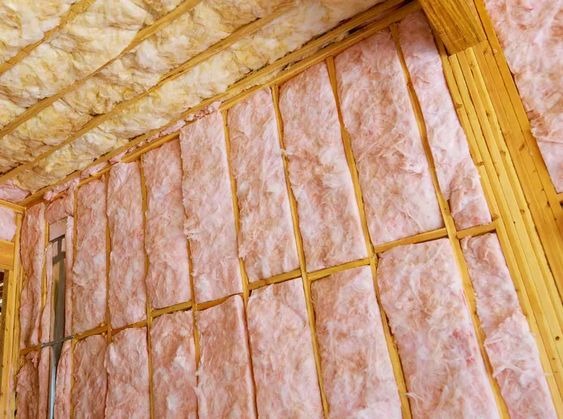
2. Mineral Wool Insulation Materials
Typically, when referring to insulation materials, the term “mineral wool” encompasses two distinct types:
- Rock wool is a type of man-made insulation material that is composed of natural minerals such as basalt or diabase.
- Slag wool, on the other hand, is also a man-made insulation material that is derived from blast furnace slag, which is the residue that forms on the surface of molten metal.
Mineral wool, a versatile insulation material, boasts an impressive average of 75% post-industrial recycled content. This means that a significant portion of the material is derived from recycled materials, contributing to its sustainability and reduced environmental impact.
One notable advantage of mineral wool is its inherent fire resistance. Unlike some other insulation materials, mineral wool does not require the addition of extra chemicals to achieve its fire-resistant properties. This attribute enhances its safety and makes it a preferred choice in applications where fire protection is a priority.
Mineral wool is widely available in different forms to suit various insulation needs. It can be obtained as blankets, which come in the form of batts and rolls, allowing for easy installation and customization to fit specific spaces. Additionally, mineral wool is also available as loose-fill insulation, which is suitable for filling irregular cavities and providing thermal insulation in hard-to-reach areas.
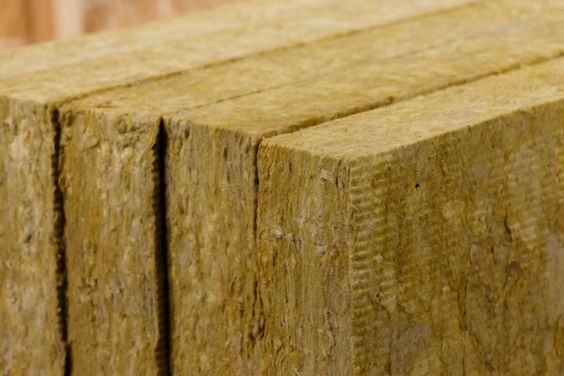
3. Cellulose Insulation
Cellulose insulation, a popular choice for insulation, is manufactured using recycled paper products predominantly sourced from newsprint. This insulation material boasts an exceptionally high content of recycled materials, typically ranging from 82% to 85%. To create cellulose insulation, the paper is initially shredded into small pieces and then processed into fibers, resulting in a product that can be tightly packed into building cavities, ensuring effective insulation.
To enhance its fire resistance and protection against insects, manufacturers incorporate the mineral borate into cellulose insulation. In some cases, ammonium sulfate, which is less expensive, may be blended with borate. This combination of minerals ensures that the insulation material possesses the desired qualities to withstand fire and deter pests.
When cellulose insulation is installed at the appropriate densities, it is designed not to settle within the building cavities over time. This feature ensures that the insulation maintains its integrity and effectiveness in providing thermal insulation and preventing heat transfer.
Cellulose insulation finds application in both new and existing homes, serving different installation purposes. In open attic spaces, it is commonly used as loose-fill insulation, while in building cavities like walls and cathedral ceilings, it is densely packed.
For existing structures, the installation process involves a series of steps. Installers begin by removing a strip of exterior siding, typically at waist height. They then drill three-inch holes, one in each stud bay, through the wall sheathing. A specialized filler tube is inserted into the top of the wall cavity, and the insulation is blown into the cavity, reaching a density of approximately 1.5 to 3.5 lb. per cubic foot. Once the insulation is fully installed, the holes are sealed with plugs, and the siding is replaced. If needed, touch-ups are done to match the appearance of the wall.
In the case of new construction, cellulose insulation can be applied in two ways. It can be damp-sprayed or installed dry behind netting. Damp-sprayed cellulose involves adding a small amount of moisture at the spray nozzle, activating the natural starches present in the product, and causing it to adhere to the inside of the cavity. Damp-sprayed cellulose typically becomes ready for wall covering within 24 hours of installation. Alternatively, cellulose can be blown dry into netting that is stapled over the building cavities, providing effective insulation.
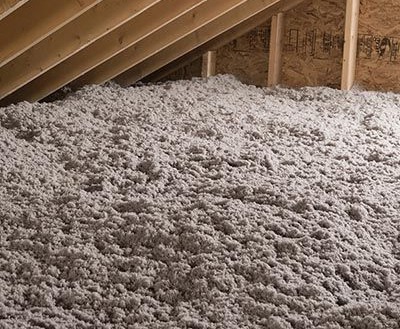
4. Cellulose Insulation Material
Insulation materials made from certain natural fibers are employed in various applications. These fibers include cotton, sheep’s wool, straw, and hemp.
• Cotton
Cotton insulation is composed of a blend of materials, with 85% of it being recycled cotton and the remaining 15% consisting of treated plastic fibers. The treatment involves the application of borate, which serves as a flame retardant and offers protection against insects and rodents, similar to the approach taken with cellulose insulation. Notably, one variant of cotton insulation utilizes recycled trim waste from blue jean manufacturing, contributing to its sustainable profile and requiring minimal energy during the manufacturing process. Cotton insulation is typically available in the form of batts, allowing for convenient installation.
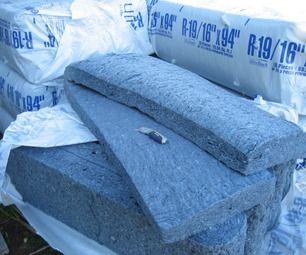
• Sheep's Wool
Sheep’s wool, when employed as insulation, undergoes a treatment process involving the application of borate. This treatment serves multiple purposes, including pest resistance, fire resistance, and mold prevention. Sheep’s wool batts specifically designed for 2 by 4-inch and 2 by 6-inch stud-framed walls offer R-13 and R-19 values, respectively. These values indicate the thermal resistance provided by the insulation, with higher values indicating better insulation performance.
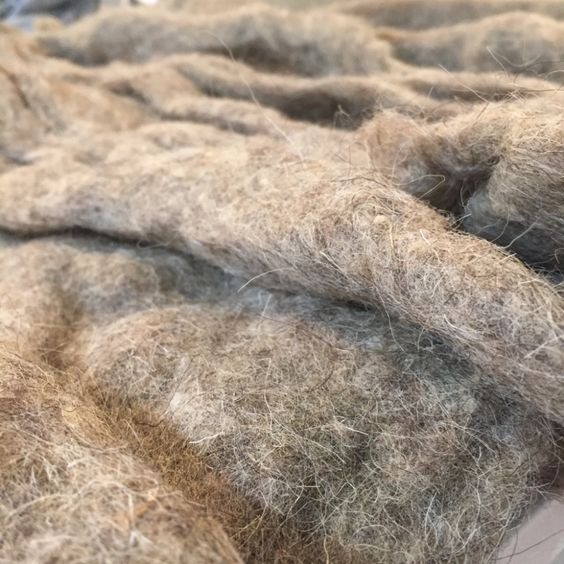
• Straw
Straw bale construction, which was widely popular on the Great Plains of the United States around 150 years ago, has experienced resurgence in interest in recent times.
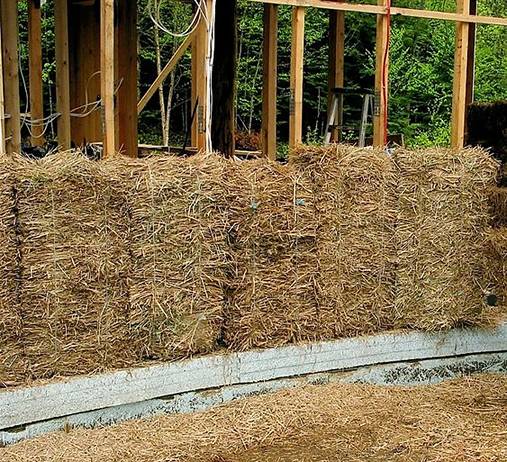
In the 1930s, a method was developed to fuse straw together into boards without the need for adhesives. These panels typically have a thickness ranging from 2 to 4 inches (5 to 102 mm) and are typically faced with heavyweight Kraft paper on both sides. Apart from their insulation properties, these boards also serve as effective sound-absorbing panels for interior partitions. Moreover, certain manufacturers have taken the concept further by creating structural insulated panels using multiple layers of compressed-straw panels.
5. Polystyrene Insulation Materials
Polystyrene, a transparent and colorless thermoplastic, finds widespread application in the production of foam boards or beadboard insulation, as well as concrete block insulation. It is also utilized in the creation of a type of loose-fill insulation comprising small polystyrene beads.
Molded expanded polystyrene (MEPS), commonly employed for foam board insulation, is additionally manufactured in the form of small foam beads. These beads can be used as a pouring insulation material for filling hollow wall cavities or concrete blocks. However, it is essential to note that they possess extremely low weight, are susceptible to static electric charge accumulation, and can be notoriously challenging to manage or control effectively.
Other types of polystyrene insulation materials, similar to molded expanded polystyrene (MEPS), include expanded polystyrene (EPS) and extruded polystyrene (XPS). EPS and XPS are both derived from polystyrene, but there are distinct differences in their manufacturing processes. EPS is comprised of small plastic beads that are fused together, whereas XPS begins as a molten material that is then shaped into sheets using a specialized form. XPS is predominantly utilized as foam board insulation, while EPS is commonly produced in blocks that can be easily cut to form board insulation. Both EPS and XPS are frequently employed as insulation materials in structural insulating panels (SIPs) and insulating concrete forms (ICFs).
It is important to note that the R-value, which indicates the thermal resistance, of XPS insulation may decrease over time due to a phenomenon known as thermal drift or aging. This occurs as some of the low-conductivity gas within the insulation escapes and is replaced by air, leading to a gradual reduction in its insulating performance.
When comparing polystyrene foam board to loose-fill or bead insulation, it is worth noting that the loose-fill or bead insulation generally exhibits a lower R-value in comparison to the foam board. The density of the polystyrene foam board plays a significant role in determining its thermal resistance or R-value.
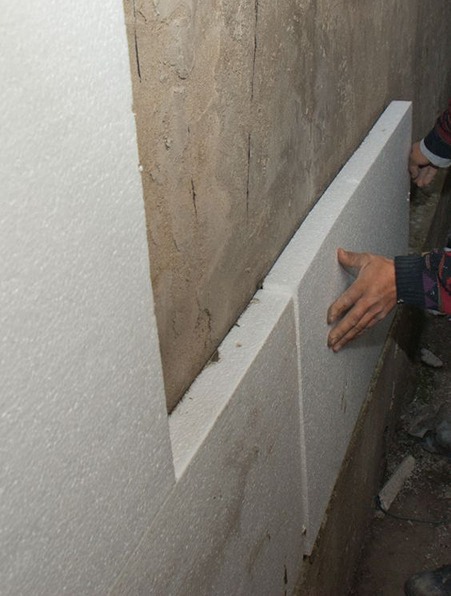
6. Polyisocyanurate Insulation Materials
Polyisocyanurate, also known as polyiso, is a type of thermosetting plastic that exists as closed-cell foam. This foam incorporates a low-conductivity gas, which is free from hydrochlorofluorocarbons (HCFCs), within its cells.
Polyisocyanurate insulation is available in various forms, including liquid, sprayed foam, and rigid foam board. It can also be transformed into laminated insulation panels featuring different facings. In comparison to installing foam boards, applying polyisocyanurate insulation through foamed-in-place methods is typically more cost-effective and offers improved performance. This is because the liquid foam has the ability to mold itself to all surfaces, ensuring better coverage.
However, it is important to note that the R-value of polyisocyanurate insulation may decrease over time due to thermal drift or aging. This occurs as some of the low-conductivity gas within the insulation gradually escapes and is replaced by air. Experimental data suggests that the majority of thermal drift takes place within the first two years following the manufacture of the insulation material.
Rigid polyisocyanurate foam panels often feature foil and plastic facings, which serve to slow down the aging process. Additionally, when properly installed and facing an open air space, reflective foil can function as a radiant barrier. The thermal resistance of the insulation can be further enhanced by incorporating an air space, with the potential to add an additional R-2 value to the overall thermal resistance, depending on the size and orientation of the air space.
Polyisocyanurate is utilized by certain manufacturers as the insulation material in the construction of structural insulated panels (SIPs). SIPs can be manufactured using either foam board or liquid foam. In the case of liquid foam, it is injected between two wooden skins under significant pressure. Once hardened, the foam forms a strong bond between the foam and the skins. Wall panels made of polyisocyanurate are typically 3.5 inches (89 mm) thick, while ceiling panels can be up to 7.5 inches (190 mm) thick. Although they may be more expensive, these panels offer improved fire resistance and water vapor diffusion resistance compared to EPS (expanded polystyrene). Furthermore, they provide 30% to 40% better insulation performance for a given thickness.
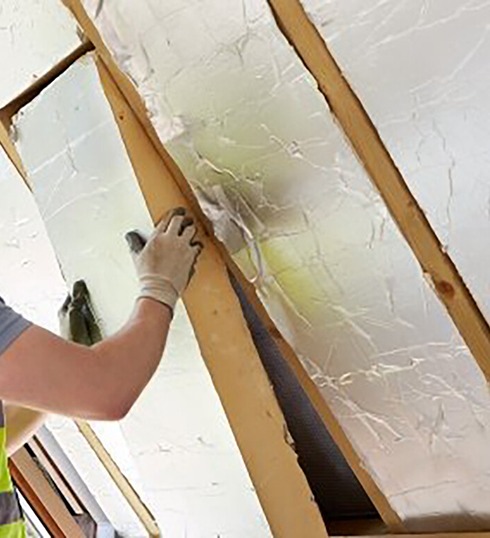
7. Polyurethane Insulation Materials
Polyurethane is an insulation material that belongs to the category of thermoset foam. Within its cellular structure, polyurethane foam contains a low-conductivity gas. This versatile insulation is available in two formulations: closed-cell and open-cell. Closed-cell foam consists of high-density cells that are closed and filled with gas, allowing the foam to expand and effectively fill surrounding spaces. On the other hand, open-cell foam has less dense cells filled with air, resulting in a spongy texture and a lower R-value.
Similar to polyisocyanurate foam, closed-cell polyurethane insulation may experience a decrease in R-value over time due to thermal drift or aging. This occurs as some of the low-conductivity gas gradually escapes and is replaced by air. The majority of thermal drift typically takes place within the initial two years following the manufacturing of the insulation material. After this period, the R-value remains stable unless the foam sustains damage.
To mitigate thermal drift, rigid polyurethane foam panels can be equipped with foil and plastic facings. These facings assist in slowing down the process. Furthermore, when reflective foil is properly installed and positioned to face an open air space, it has the capacity to function as a radiant barrier. Depending on the size and orientation of the air space, this configuration has the potential to enhance the overall thermal resistance by an additional R-2 value.
Polyurethane insulation comes in two main forms: liquid sprayed foam and rigid foam board. Additionally, it can be transformed into laminated insulation panels that offer various facing options.
Applications of polyurethane insulation in the form of sprayed or foamed-in-place are generally more cost-effective than installing foam boards. Moreover, these applications often outperform foam boards because the liquid foam effortlessly conforms to all surfaces, ensuring a comprehensive coverage. Presently, all closed-cell polyurethane foam insulation is manufactured using a non-HCFC (hydrochlorofluorocarbon) gas as the foaming agent, aligning with environmentally friendly practices.
Low-density open-cell polyurethane foams utilize air as the blowing agent and possess a stable R-value that does not degrade over time. These foams exhibit similarities to conventional polyurethane foams but offer increased flexibility. Some variations of low-density foams employ carbon dioxide (CO2) as the foaming agent.
When applied, low-density foams are sprayed into open wall cavities, rapidly expanding to seal and fill the cavities effectively. There are also slow-expanding foam options designed specifically for cavities in existing homes. This type of liquid foam expands gradually, minimizing the risk of wall damage caused by excessive expansion. Additionally, the foam allows for the permeation of water vapor, maintains flexibility, and resists moisture wicking. It offers reliable air sealing properties, is fire-resistant, and does not sustain a flame.
There are soy-based polyurethane liquid spray-foam products available as an alternative option. These products can be applied using the same equipment typically used for petroleum-based polyurethane foam products.
Certain manufacturers utilize polyurethane as the insulation material in the construction of structural insulated panels (SIPs). Both foam board and liquid foam can be employed in the fabrication of SIPs. In the case of liquid foam, it can be injected between two wooden skins under substantial pressure. Once hardened, the foam establishes a robust bond between the foam and the skins. Wall panels crafted from polyurethane usually have a thickness of around 3.5 inches (89 mm), while ceiling panels can be as thick as 7.5 inches (190 mm). Although these panels tend to be more expensive, they offer enhanced resistance to fire and water vapor diffusion compared to EPS (expanded polystyrene). Furthermore, they provide 30% to 40% better insulation for a given thickness.
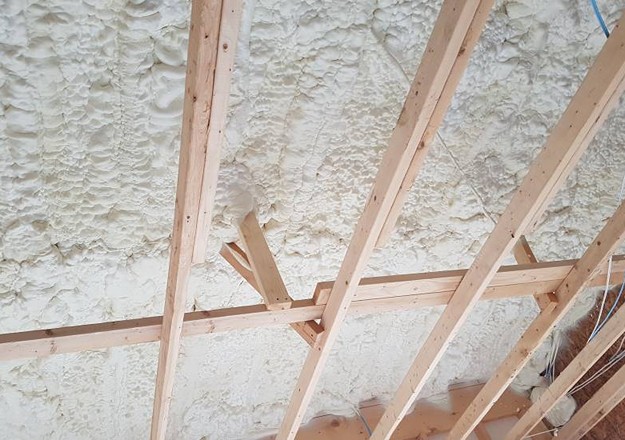
8. Perlite Insulation Materials
Perlite insulation materials are frequently encountered as attic insulation in houses constructed prior to 1950.
Perlite is comprised of tiny and lightweight pellets that are produced by subjecting rock pellets to high temperatures, causing them to expand. This process results in a loose-fill insulation composed of pellets that can be easily poured into position or combined with cement to form a lightweight concrete with reduced heat conductivity.

9. Cementitious Foam Insulation Material
Cementitious insulation material refers to a foam made from a cement-based mixture that is utilized as either sprayed-foam or foamed-in-place insulation. One specific form of cementitious spray foam insulation, called aircrete®, incorporates magnesium silicate and initially possesses a consistency similar to shaving cream. Air krete® is injected into enclosed cavities. Cementitious foam carries a similar cost to polyurethane foam, is non-toxic and non-flammable, and is produced from minerals, such as magnesium oxide, extracted from seawater.
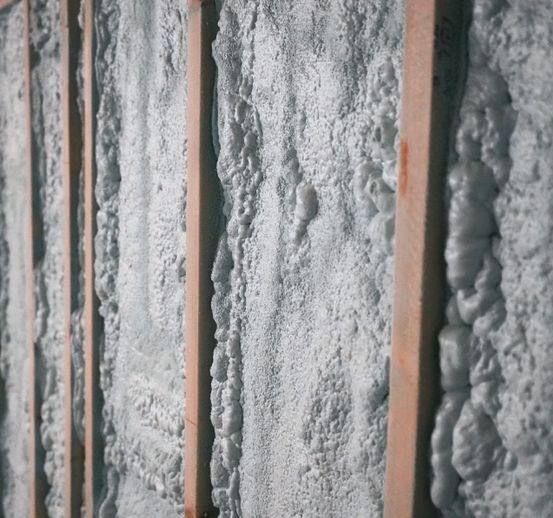
10. Phenolic Foam Insulation Material
In the past, phenolic (phenol-formaldehyde) foam was relatively popular as a rigid foam board insulation option. However, its availability as board insulation is currently limited, although it is still accessible as a foamed-in-place insulation material.
Phenolic foamed-in-place insulation utilizes air as the foaming agent. One significant drawback of phenolic foam is its tendency to shrink by up to 2% after curing, which has contributed to its decreased popularity in recent times.
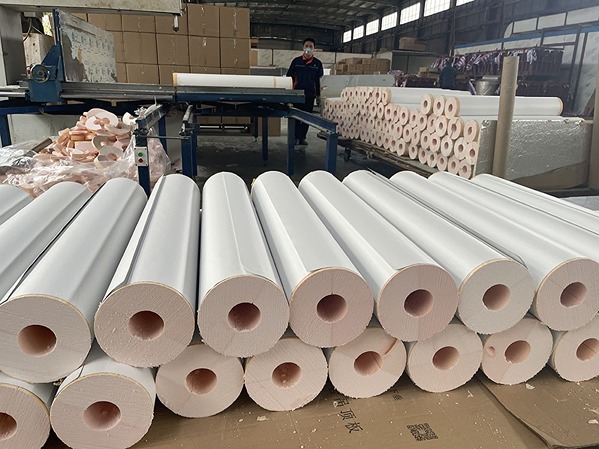
Facings for Insulation
The process of attaching facings to insulation materials is done during manufacturing. The purpose of a facing is to safeguard the surface of the insulation, maintain its integrity, and allow for easy attachment to building components. Additionally, certain types of facings can serve as air barriers, radiant barriers, vapor barriers, and even provide flame resistance.
Common materials used for facings include kraft paper, white vinyl sheeting, and aluminum foil. When the joints between insulation boards are properly taped and sealed, these materials can function as both vapor barriers and air barriers. Aluminum foil has the added capability of acting as a radiant barrier. The choice of facing material and whether or not to incorporate a barrier will depend on factors such as climate, location, and the specific installation requirements for your home.
In some cases, the same materials used for insulation facings can be installed separately to provide independent air barriers, vapor barriers, and radiant barriers.



